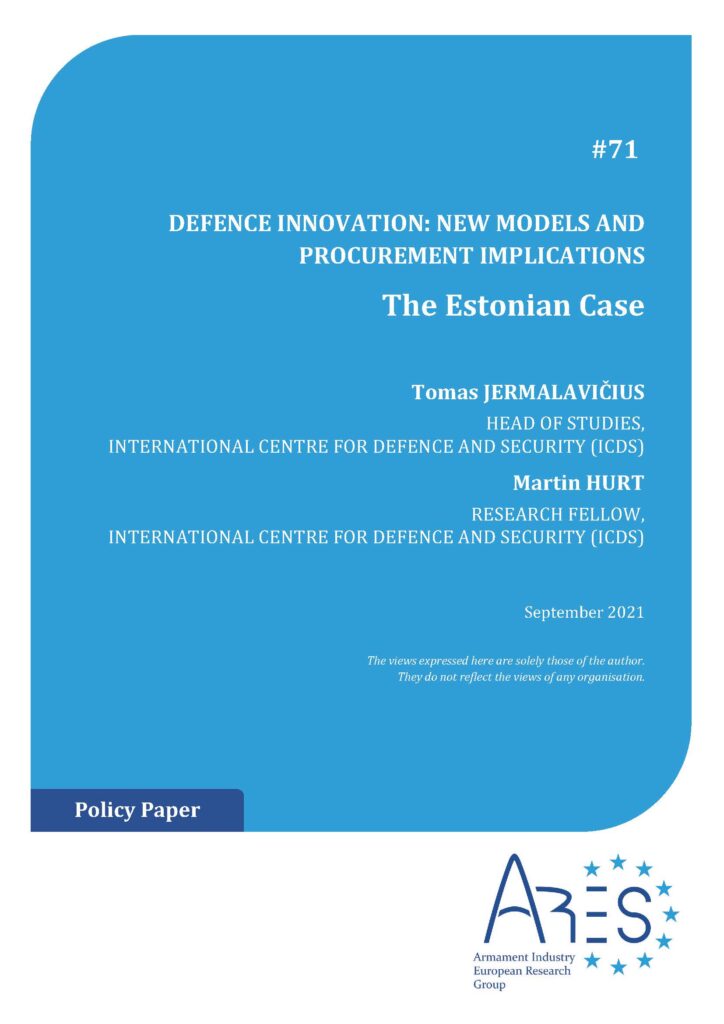Notes / Ares
15 September 2021
Defence Innovation: New Models and Procurement Implications. The Estonian Case

As a small country, Estonia cannot afford to pursue defence innovation through large, complex, and expensive programmes that entail high risks and uncertainty. Its land-centric and reserves-based defence forces also have limited demand for cutting-edge innovative solutions and prefer cost-effective innovation procurement through the products and services already available in the competitive market. However, Estonia draws on its vibrant start-up culture and some “niche” strengths in its national S&T base (such as ICT, cybersecurity, AI, robotics, health technology) to advance enterprise-led and MoD-supported innovation that also benefits from its “broad-based” defence model and whole-of-society approach. This innovation is primarily focused on enhancing the export potential, but it also provides the means to engage the Defence Forces in activities that eventually stimulate military interest to incorporate more high-tech solutions into capability development. Despite a strong transatlanticist orientation in its security and defence policy, Estonia has also been highly successful in exploiting the opportunities to manage financial and technological risks as well as in integrating its security and defence innovation ecosystem into multinational networks that emerged with the new European instruments, particularly the EDIDP/EDF…



